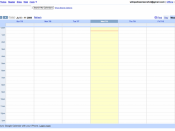Charter Communications has determined that its e-Business functions are not as efficient and, as such, is losing its competitive edge against other companies. The business development market has done some research and identified potential projects to implement.
IntroductionBusiness Requirements are the elements or necessary processes an organization must perform in order to do business. They can be expressed in textual documents or graphical models. Understanding all facets of the enterprise is a crucial prerequisite to undertaking a process improvement effort. The most common way of doing process improvement is to first examine the business "as-is" or as it is currently operating. This effort often leads to an in-depth understanding of process interactions, or lack thereof, which will uncover inefficiencies and disconnects that lead to a desire for improvement.
Business RequirementsA company's business requirements describe the needs of the business. Charter Communications does currently have a website in place; it is a menial affair with simplistic and; unfortunately outdated information.
It does fill the niche of an online presence in what I like to call the "Internet Business Card"; it does have several of the basics: a well-designed format, contact information, and a bit about the company. It does not; however have any useful applications and is sorely out of date; behind, in fact, of a move and several key employee position changes, this is why I have chosen the following requirements based upon the business needs of Charter Communications.
1.Improving Business Efficiency - Develop and implement a new website or enhance an existing website to support the company's inside and outside sales force.
2.Improving Customer Satisfaction - Develop and implement a new website or enhance an existing website to include customer service. This might include features for self-service or use of real-time customer support.
3.Improving Employee Satisfaction - Develop and implement a new intranet-based system or enhance an existing intranet-based system that supports employee human resource features such as viewing/modifying benefits, payroll viewing and deduction modification, viewing/modifying 401K benefit, etc.
Benefits of Business RequirementsImproving Business EfficiencyOne of the key differentiators between Charter Communications and other organizations is our ability to analyze data and develop cable solutions for customers. As with many organizations, knowledge is why a particular customer will conduct business with you, second only to relationships. Knowing what and how to bring a solution together is what our sales staff does better than most other Agency organizations in the market.
As good and knowledgeable as our sales staff is, there are things we as an organization can do to help them. One such item is an upgrade to our website to allow information to be viewed by the sales personnel, specifically, current customer and service information and pricing tools. The purpose for this is two-fold; one, to allow sales personnel to have access to customer data when he or she are out of the office, especially when they are at customer sites and two, to be able to estimate pricing and generate new quotes. Oftentimes the sales force is out in the field and are posed with questions about services and updates on installs or need to generate a new quote while at a customer location and instead of having to make a call or reschedule, they can access the data right there on their laptops. This would ensure that they have the most up-to-date information and pricing whenever they need it.
Use Case1.Website access in generated for:a.Sales person2.Access information emailed to sales person3.Customer information loaded into database4.Pricing updates received and input into database5.Create or add access to existing sales person ID6.Sales person accesses website for information as needed:a.Customerb.Pricing7.Contacts take appropriate measure(s)a.Reviewb.Quotec.Submit new ordersImproving Customer SatisfactionAnother key differentiator between Charter Communications and other organizations like us is the operations segment of the company. Aside from developing the solution, communicating, coordinating, and managing the implementation is most important business aspect we fulfill. Without the finished product delivered to the customer, we have done nothing.
Currently, the operations staff uses a proprietary database with email applications to transmit the bulk of the information to the customer about their installation status. Aside from phone calls, the staff relies heavily on keeping track of the project in the database and using emails to send the information to the customer. This is also true of trouble tickets and repair issues, save for the times when email is not an option for the customer such as when their Internet services are offline.
The proposal would be to implement not only a facelift to the website and updating the content, but to also design and launch a customer portal where customers can view their work order data online. Instead of a project manager updating the database and transmitting emails with the new project content in them, he or she could simply send out an auto-email referring the customer to the site to log in and check for updated information.
As the majority of business we do are with existing business contacts who simply pass on our information to the end-user customer, they could have one login that allowed them access to all their accounts and be able to manage them all from there and send out what updates he or she felt were warranted. Beyond the simplification of process for the internal project managers, customers and business contacts no longer would need to contact us to see the most up-to-date information on their project. Instead of generating an email request or phone call, many of their questions could be answered by simply looking up the data on the site, saving time for all concerned.
Use Case1.Work order information loaded into database2.Website access is generated for:b.Customerc.Sales person3.Access information emailed to appropriate contacts4.Updates received and input into database5.Email notification submitted via database to appropriate contacts6.Contacts receive email and access website for information7.Contacts take appropriate measure(s)8.Repeat 4-7Improving Employee SatisfactionLastly Charter Communications plans to improve the employee intranet site. Charter plans to create a web-based 24/7 Self-Service Module. With this module it will also help improve human resources administration and employee satisfaction. The new Web-based Employee Self-Service module gives employees access to company organizational charts and ability to view and make changes to personal and dependents data, vacation accruals, and benefits information. Product automates HR processes and uses wizards to lead non-technical users through data entry step-by-step.
Highlighting this new release is the addition of an Employee Self-Service module. This web-based feature gives employees easy access to company organizational charts and the ability to view and/or make changes to their personal and dependents data, vacation accruals and a variety of additional benefits information. The new intranet-based Employee Self Service module enables employees to access and update data in the following areas:Use Case1."My Self" section: Allows employees to view and update their personal information such as address, phone numbers, and emergency contacts.
2."My Family" section: Allows employees to enter information about their dependents.
3."My Benefits" section: Allows employees to view their current benefits. They can also view information on multiple benefit plans available, and do plan comparisons.
4."My Time Off" section: Allows employees to check accrued sick and vacation time.
5."My Company" section: Allows employees to search a directory of all company employees, including pictures and organizational charts.
Technology Acquisition AlternativesImproving Business EfficiencyThe Web is one of the least expensive and yet most targeted, flexible, and effective forms of advertising available. Plus, many companies discover that a Web site is a more economical, faster, and efficient way to make information available to clients, customers, distributors and employees. Instead of spending large amounts of money producing newsletters, brochures, memos, product booklets, catalogs, etc., businesses are pointing people to their Web site where they can quickly add and change information.
With the website Rightnow.com the site is into creating superior customer relationships which rely on the ability to recognize and answer the customers' needs successfully. With the website RightNow Customer Relationship Management (CRM) helps organizations understand, predict and respond to customers' needs consistently across service, sales and marketing, enhancing business performance at all stages of the customer relationship. With RightNow CRM one will have a single enterprise view of all customer data to identify and leverage high-value customers while increasing sales productivity and revenue (Customer Experience, 2006).
According to the website for cio.com, (2006) organizations today run on Internet time. Many marketing opportunities appear and disappear at Internet speed. For many organizations, the time it takes to plan and implement the technology infrastructure needed to support the pursuit of those marketing opportunities is simply too long, and those opportunities are lost forever. The alternative is to employ the expertise of an established, proven marketing infrastructure professional services company that understands the technical demands of marketing in Internet time, at Internet speed (Your Business' Future, 2006).
Improving Customer Satisfaction"Technology breakthroughs offer new ways to create and meet customer demand." According to cio.com, "as a new marketing medium, the Internet and its associated marketing technologies have made it possible to cost-effectively communicate with smaller and smaller segments of customers. As a communications mechanism, Internet technologies act as a "connective tissue" within companies, linking historically disparate marketing, sales and service functions" (Your Business' Future, 2006).
Nowadays, organizations need to move products, services and information faster, as real-time demand requires. With this process in place this shifts the organization's focus away from production processes and toward customer processes. Now, a company's ability to thrive depends on capturing appropriate customer data from every point of customer contact, from order entry to fulfillment including website click streams, e-mail, telephone, fax, call centers, kiosks/stores, resellers and direct sales forces (Your Business' Future, 2006).
When dealing with multiple sources of customer data, the primary focus of the enterprise moves toward the customer. This data is known as a legacy database which is "organized around products, services, geographies, transactions and channels which must be redesigned to support a unified view of past and present customer interactions".
Executing against a customer-centric database strategy is a difficult task. For example, customer databases are often populated with data extracted from legacy systems. The process of extracting and maintaining this legacy data can be expensive and often includes:â¢Legacy data archeology (finding the right data).
â¢Legacy data transformation and cleansing (since few enterprises adhere to data standards, extracted data often must be reworked so that it is usable by the customer-interaction database).
Building the data models and metadata repositories to support the necessary analysis of this legacy data (Your Business' Future, 2006).
Improving Employee SatisfactionMost organizations use web technology for Internet access and to disseminate, administrative and other information internally using an intranet. Few organizations have adopted extranets to sustain employee relationships and collaborate with clients and outside firms on cases and transactions.
Web technology is changing focus from publication to portal and from sharing information to workgroup collaboration. The new focus will make extranets a primary tool for communication and exchange of information.
Many web-based collaboration tools are on the market. The following is a sampling of a few products with solid market share and reputation:â¢Discussion Group Software - O'Reilly Webboard 4.0 and Lundeen & Associates Web Crossing 4.0 are examples of threaded discussion group and chat room collaboration tools. The two products offer similar functionality and features threaded or linear discussions, file attachments, searching, auto-archiving, mailing list support, among others.
There are a number of portals discussed below which offer threaded discussion functionality, and net conferencing software that offers chat capability, so dedicated discussion group software may not be needed if a more comprehensive solution is implemented.
â¢Net Conferencing Software - Microsoft's "NetMeeting" and Netscape's "Netscape Conference" are internet conferencing software that can be adapted for use on intranets and extranets. NetMeeting and Netscape Conference offer a similar core feature set audio/video conferencing, whiteboard, chat and file transfer and are integrated into Microsoft's and Netscape's respective browsers. Microsoft's NetMeeting is integrated into Office 2000, as well, and offers support for shared application use during a net conference.
â¢Portals - The past 6-8 months have seen a bewildering proliferation of enterprise portals. In addition to dedicated portal software, major application vendors such as SAP, PeopleSoft, Oracle and JD Edwards have announced or delivered application portals (Best Run Business, 2006).
Ultimately, the proliferation of portals will be self-defeating because multiple portals within an enterprise interferes with the prime value-added by portals a "one stop shop" for web-based access to applications and information.
Legal, Ethical and Regulatory RamificationsIt is the policy of Charter Communications and to conduct its business in accordance with the highest ethical standards in order to merit and maintain the confidence and trust of its customers and the public in general. This includes, to the best of the Company's abilities, following through with what Charter Communications determines is appropriate to do, including without limitation, reporting results with accuracy and transparency and maintaining compliance with all laws, rules and regulations that govern the Company's businesses.
There are always the potential threats to any company-wide intranet. There is the issue of ethics to consider with the company having several sales regions where marketing representatives compete with one another. Every sales representative has to inform the director of marketing about his/her daily meetings with clients, projected sales and end results. Two people serving the same region will be curious about the other salesperson's potential clients or projected targets. Or the sales representative working in California could be curious about the performance of his peer in St. Louis.
Another threat could be from a competitor vying for the same market. If he or she could get through the security measures and look at the Research and Development (R&D) efforts or sales targets, they could easily change their strategy and hit the market with better plansAlso within a company, the sharing of reviews among managers about subordinates, decision-making on purchases and entering into new contracts, etc., are all sensitive information issues viable to intrusion by employees who could be affected by such decisions. Employees who were terminated have to be prevented from accessing the company intranets, keeping in mind that they would be familiar with all security measures that exist. Often we hear about hackers breaking into secured Web sites even federal government sites are not spared.
ConclusionTechnology waits for no one; better to be an innovator than a left-behind. Many of our competitors offer such solutions for both their customers and employees, to stay in the market we must continue to make strides to either bridge those gaps or create ones ourselves. A business requirement is what the business needs to do and a business rule is how the business does it. If one is trying to put together business requirements for a new system, the requirements will be a definition of what one is trying to accomplish. The system must be able to accomplish what the business requires of it. Taking the time to understand and document the business requirements is absolutely "essential" to ensuring the alignment of the business strategy, and makes any project plan easier to sell internally. Failure to accurately define business requirements can lead to wrong decisions and failed implementations.
References:Cockburn, A., (October, 1998), Best Use Case Template, Retrieved June 2, 2006, from: http://alistair.cockburn.us/usecases/uctempla.htmDavenport, T. H., (June, 2005). The Coming Commodization of Processes, 83 (6) 100,Retrieved June 2, 2006, from EBSCO Host Research Database (University ofPhoenix).
Department of Information Resource: Best Practices Survey. (n.d.). Retrieved May 31,2006, from: http://www.dir.state.tx.us/eod/qa/bestprac.htmLarman, C., (n.d.), Use-Case Model: Writing Requirements in Context, Retrieved May 31, 2006, from: http://www.craiglarman.com/book_applying_2nd/06-use%20cases.pdfCRM and the Customer Experience. (2006). Retrieved on June 4, 2006 from: http://www.rightnow.comStrategies for Success: What are the benefits?, (August, 2004). 10 (9) 2, Retrieved June 4, 2006, from EBSCO Host Research Database (University of Phoenix).
The Best Run Businesses. 2006. Retrieved from the World Wide Web on June 3, 2006 athttp://www.sap.com/solutions/safepassage/newsevents/Press.epx?PressID=4356Your Business's Future Depends on: Technology-Driven Marketing Innovations. (2006). Retrieved June 4, 2006 from: http://www.cio.com/sponsors/041501_wheelhouse.html


